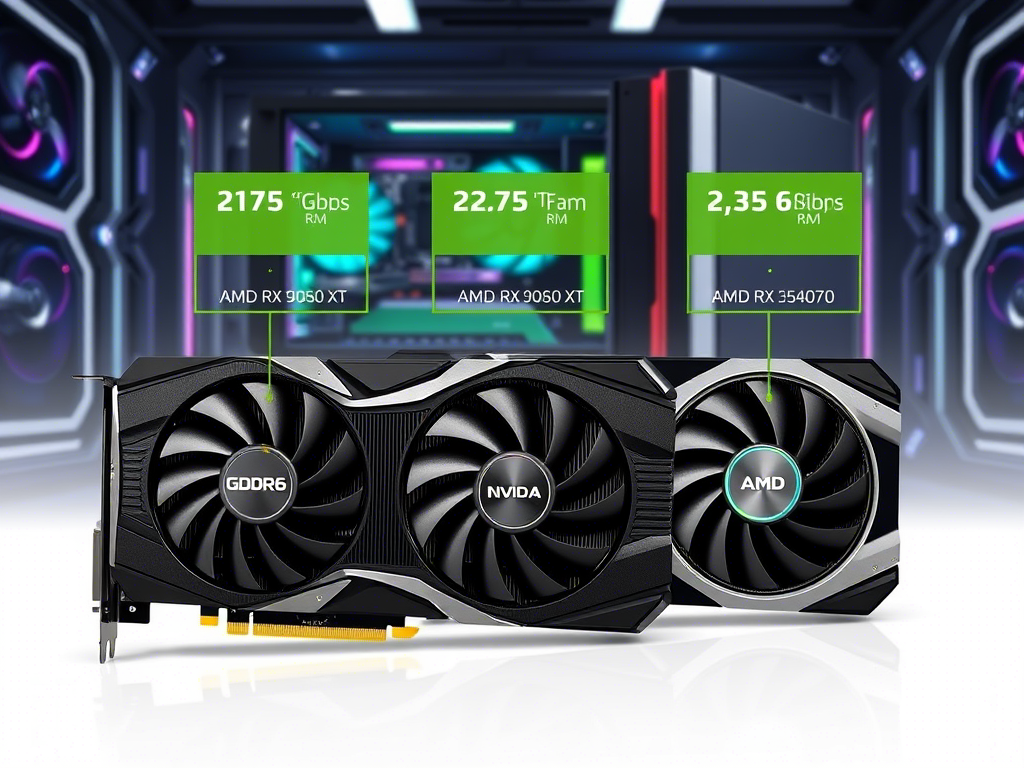
RTX 5050 Might Pack the Fastest GDDR6 Memory Available — Matching Flagship GPUs Like the RTX 4070 and RX 9070 XT
Earlier leaks suggested that the RTX 5050 would stick with GDDR6 memory , unlike the higher-end models in the RTX 50 series — from the RTX 5060 up to the RTX 5090 — which are expected to use the newer and faster GDDR7 . However, the exact speed of the GDDR6 modules remained a mystery — until now.
According to leaker MEGAsizeGPU on X (formerly Twitter), the RTX 5050 is reportedly set to use the fastest variant of GDDR6 currently available at scale: 20 Gbps memory modules . This matches the speed used in AMD’s upcoming RX 9070 series GPUs , as well as the GDDR6-equipped version of the current-gen RTX 4070 .
If this leak holds true, the RTX 5050 will offer a memory bandwidth of around 320 GB/s , which is roughly 40% of what the RTX 5060 is expected to deliver (448 GB/s) . That’s a significant drop — but it lines up with the rumored reduction in raw compute power. Reports suggest the RTX 5050 will have about half the CUDA cores compared to the RTX 5060, making it a much more budget-oriented option in the lineup.
It’s still unclear how the RTX 5050 would perform with GDDR7 instead of GDDR6. However, given its reduced GPU core size and lower compute capabilities, it seems unlikely that the 20 Gbps GDDR6 will be a major limiting factor in its overall performance.
The 20 Gbps GDDR6 speed bin is currently the fastest version of GDDR6 used in any graphics card on the market today. This high-speed variant comes remarkably close to matching Micron’s 21 Gbps GDDR6X memory, which powers Nvidia’s RTX 30 and RTX 40 series GPUs. In fact, the difference between the two is relatively small — GDDR6X offers just about 5% more bandwidth than the top-tier GDDR6 modules.
While Samsung has reportedly developed even faster 24 Gbps GDDR6 chips in the lab, these remain outside the realm of mass production — and it’s unclear whether they’ll ever make it into consumer hardware at scale.
One of the key advantages of Samsung’s GDDR6 memory , at least for its 20 Gbps variant, is its lower power consumption. Unlike older GDDR6 modules and Micron’s GDDR6X , which require 1.35V to operate, Samsung’s high-speed GDDR6 only needs 1.1V — a 23% reduction in voltage.
Interestingly, SK Hynix doesn’t appear to offer any sub-1.35V GDDR6 variants, suggesting that its version of the 20 Gbps GDDR6 likely runs at the standard 1.35V. This creates a small but notable difference between manufacturers — one that could affect real-world performance depending on which memory chips end up on a given graphics card.
In fact, some reports suggest that the RX 9070 XT already shows a 1–2% performance variation based on memory manufacturer, with cards using SK Hynix modules performing slightly faster than those with Samsung GDDR6 . The reason behind this discrepancy appears to be looser memory timings on Samsung’s side — an intentional trade-off that prioritizes energy efficiency over peak performance.
This means that while Samsung’s GDDR6 may draw significantly less power, it could also result in slightly lower frame rates compared to SK Hynix’s version.
As for the RTX 5050 , most of its specs have been more or less confirmed:
- 2,560 CUDA cores
- 20 Streaming Multiprocessors (SMs)
- A 128-bit memory bus based on the GB207 GPU die
The only official detail so far is the use of GDDR6 memory — even though the laptop version of the RTX 5050 uses GDDR7 . Additional leaks point to a boost clock as high as 2,520 MHz , which would make it one of the fastest-clocked budget GPUs in recent years.
While Nvidia hasn’t officially announced a release date , rumors suggest the desktop RTX 5050 will launch sometime this year.





